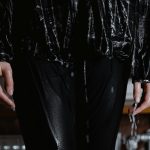Just like choosing the right shelter during a sudden summer storm, picking the right fabric can make all the difference when hot flashes hit. You want something that breathes, wicks moisture, and keeps you comfortable without trapping heat. But with so many options out there, how do you know which materials truly help cool you down? Let’s explore what makes certain fabrics stand out for managing those unexpected temperature spikes.
Table of Contents
Key Takeaways
- Linen, bamboo, cotton, hemp, and wool are the most breathable natural fibers ideal for hot flash relief.
- Fabric blends combining natural and synthetic fibers enhance moisture-wicking and breathability for better cooling.
- Avoid cotton alone due to its moisture retention, which can feel damp and uncomfortable during hot flashes.
- Lightweight, loose-fitting garments in lighter colors promote airflow and reflect heat, improving comfort.
- Proper care, including washing without fabric softeners, preserves the fabric’s breathability and cooling properties.
Understanding Breathability and Moisture Management in Fabrics
Although you mightn’t always notice it, breathability and moisture management are key factors that determine how comfortable a fabric feels, especially during hot flashes.
When choosing clothing, you want fabrics with strong breathability factors that allow air to flow freely, helping your skin stay cool and dry.
Moisture wicking plays an essential role here—it pulls sweat away from your body to the fabric’s surface, where it can evaporate quickly. This process prevents that sticky, clammy feeling and reduces overheating.
Understanding these qualities helps you pick fabrics that support your body’s natural cooling mechanisms, keeping you comfortable and confident during temperature spikes.
Natural Fibers Ideal for Hot Flash Relief
Many natural fibers offer excellent breathability and moisture-wicking properties that make them ideal for managing hot flashes. When you choose fabrics with linen advantages, you benefit from fibers that are lightweight and highly breathable, keeping you cool. Bamboo’s softness also makes it a popular choice, as it feels gentle on your skin while effectively absorbing moisture. Cotton, hemp, and wool round out the list of natural fibers that help regulate your body temperature during hot flashes.
| Fiber | Key Benefit | Feel on Skin |
|---|---|---|
| Linen | Exceptional breathability | Crisp, airy |
| Bamboo | Softness, moisture-wicking | Smooth, silky |
| Cotton | Absorbent, breathable | Soft, cozy |
| Hemp | Durable, breathable | Rougher, natural |
| Wool | Temperature regulating | Warm, soft |
Benefits of Fabric Blends for Temperature Regulation
While natural fibers offer great benefits for managing hot flashes, blending these materials can enhance their performance even further.
When you choose fabric blends, you tap into the combined strengths of different fibers, improving moisture-wicking, breathability, and durability. The fabric properties of blends often balance softness with resilience, making garments more comfortable throughout temperature swings.
These blend advantages mean you get better temperature regulation, as synthetic fibers can help fabrics dry faster while natural ones maintain airflow.
By selecting blends thoughtfully, you avoid the downsides of single fibers, ensuring your clothing adapts better to your body’s needs.
Limitations of Common Fabrics During Hot Flashes
You might assume cotton is the best choice since it’s natural, but it actually holds onto moisture, making you feel damp during hot flashes.
Silk may feel luxurious, but it traps heat close to your skin, worsening your discomfort.
Understanding these drawbacks helps you pick fabrics that truly keep you cool.
Cotton’s Moisture Retention
Although cotton is praised for its softness and breathability, it tends to hold onto moisture rather than wick it away. You’ll appreciate cotton advantages like comfort and natural fibers, which feel gentle against your skin during hot flashes.
However, cotton disadvantages become apparent when sweat soaks in, leaving you feeling damp and sticky. This moisture retention can make hot flashes more uncomfortable, as cotton doesn’t dry quickly. If you rely solely on cotton, you might find yourself changing clothes more often to stay fresh.
While cotton lets your skin breathe, it doesn’t actively manage sweat, which is a significant factor during hot flashes. Understanding these limitations helps you make smarter fabric choices to stay cooler and drier throughout the day.
Silk and Heat Trapping
Because silk feels smooth and luxurious against your skin, it’s often a go-to fabric for comfort. You’ll appreciate the silk benefits like its natural softness and hypoallergenic properties.
However, when it comes to managing hot flashes, silk isn’t always the best choice. Its tight weave can lead to significant heat retention, trapping warmth close to your body. This makes it harder for sweat to evaporate, which can leave you feeling hotter and more uncomfortable during a hot flash.
While silk looks and feels elegant, it doesn’t offer the breathability you need to stay cool. If you want to manage hot flashes effectively, you might want to opt for fabrics that promote better airflow and moisture-wicking instead of silk’s heat-trapping nature.
Layering Strategies With Breathable Fabrics
When managing hot flashes, layering with breathable fabrics lets you quickly adjust to temperature changes throughout the day.
Start with a lightweight, moisture-wicking base layer made of cotton or bamboo to keep you dry. Add a thin linen or loose-knit cotton shirt as your middle layer for breathability without bulk.
Finally, keep a breathable jacket or cardigan handy to remove or put on as needed. These layering techniques help you create versatile, breathable outfits that respond to fluctuating temperatures.
Avoid heavy or synthetic fabrics that trap heat. By mixing and matching layers, you maintain comfort and control sweat without overheating.
Tips for Selecting and Caring for Cooling Fabrics
When choosing cooling fabrics, focus on natural, breathable materials like cotton or bamboo that wick moisture away.
You’ll also want to follow care instructions carefully to maintain their cooling properties and durability.
Taking simple steps in selection and care can make a big difference in staying comfortable during hot flashes.
Fabric Selection Tips
Although choosing the right fabric might seem straightforward, selecting materials that truly help manage hot flashes requires a bit of know-how.
Focus on fabric weight; lighter fabrics allow better air circulation and reduce heat buildup. Avoid heavy or thick materials that trap sweat and increase discomfort.
Color choice also matters—lighter hues reflect sunlight and heat, keeping you cooler, while dark colors absorb heat and can worsen hot flashes.
Opt for natural, breathable fibers like cotton or linen, which wick moisture effectively.
When trying on clothes, pay attention to fit; looser garments promote airflow better than tight ones.
Caring for Cooling Fabrics
Choosing the right cooling fabrics is just the beginning; knowing how to care for them guarantees they maintain their cooling properties and durability.
For effective fabric maintenance, always follow the washing guidelines on the label. Most breathable fabrics like cotton, linen, and bamboo prefer gentle cycles with cold water to prevent shrinkage and preserve fibers.
Avoid using fabric softeners since they can clog the fabric’s pores, reducing breathability. Instead, opt for mild detergents to keep your garments fresh without damaging the material.
Air drying is usually best, as high heat from dryers can weaken fibers and diminish cooling effects.
Frequently Asked Questions
Can Breathable Fabrics Help Reduce Night Sweats From Hot Flashes?
Imagine wearing a shirt that feels like a cool breeze on a hot day. When you choose breathable materials, you boost sweat management, helping reduce night sweats from hot flashes and keeping you comfortable all night long.
Are There Specific Colors That Enhance Fabric Breathability for Hot Flashes?
You’ll find that color impact on fabric breathability is subtle, but lighter colors reflect heat better, enhancing comfort. Pair this with a smooth fabric texture to help air flow, keeping you cooler during hot flashes.
How Do Breathable Fabrics Perform in Humid Climates for Hot Flash Relief?
You might think breathable fabrics struggle in humidity, but with advanced cooling technology, they excel in humidity management. They wick moisture away, keeping you dry and comfortable, so you’ll find real relief from hot flashes even in sticky climates.
Can Breathable Fabrics Be Used for Both Casual and Formal Hot Flash Clothing?
You can definitely use breathable fabrics in both casual styles and formal designs. They keep you comfortable and cool, so whether you’re dressing down or up, breathable materials help manage hot flashes effectively throughout your day.
Are There Breathable Fabric Options Suitable for Sensitive Skin During Hot Flashes?
Imagine Sarah, who’s battled sensitive skin during hot flashes. You’ll find natural fabric types like bamboo perfect—they’re breathable, gentle, and moisture-wicking, so you won’t irritate your skin while staying cool and comfortable all day.
- Tetron Fabric for Marine Applications: Durability and Use Cases - June 18, 2025
- Tetron Fabric for Outdoor Furniture: Weather Resistance and Care - June 18, 2025
- Tetron Fabric for Wall Coverings: Style and Application Tips - June 18, 2025







